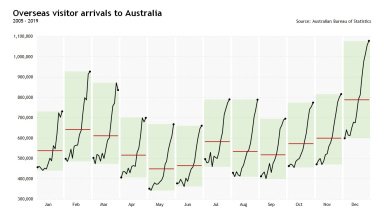
Last version published: 13/04/2021 11:41
Publication number: ELQ-42041-6
View all versions & Certificate

Cycle Plot in Excel
Excel/PowerPoint template to build Cycle Plots, Run Sequence Plots and Graph Envelope Overview to detect seasonality.
Further information
To enable business analysts, scientists, statisticians, data visualizers and journalists to produce Cycle Plots in Excel along with the Run Sequence Plot and the Graph Envelope Overview to detect seasonality.
Forecasting, Exploratory data analysis (EDA), reporting and communication in business, science, statistics, data visualization or data journalism.
Template relies heavily on Excel's Dynamic Arrays capabilities, only available to Office 365 subscribers.






